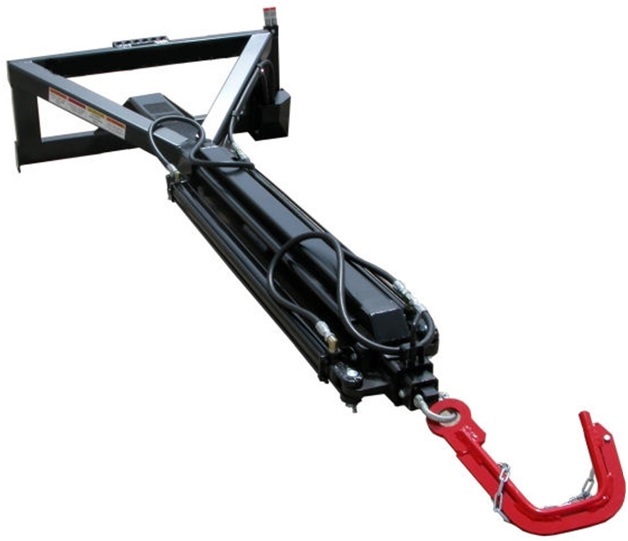Safety in the Skies: A Guide to Operating Skid Steer Truss Booms Securely
Posted by Lee Padgett on 30th Nov 2023
If you’re in the construction and maintenance industry, then you know that there are jobs and tasks that require a bit of elevation, the kind of elevation where skid steer truss booms come into play.
These versatile tools take certain tasks to new heights, quite literally. However, with this increase in risk due to elevation, there is also increased responsibility. Ensuring the safety of operators navigating the skies on these booms is vital.
That said, let's take a closer look into how one should be operating skid steer truss booms securely.
What Are Skid Steer Truss Brooms?
A skid steer truss boom is an attachment that transforms a skid steer loader into a crane-like machine. It extends the reach of the skid steer loader, allowing it to lift and place trusses, frames, beams, and other equipment at heights that would not be possible with the skid steer loader alone.
Before soaring to the skies, a grounded understanding of this tool is crucial. Operators must familiarize themselves with the controls, the range of motion, and the weight distribution of the skid steer truss boom. This foundational knowledge serves as the bedrock for safe operation, preventing accidents caused by misjudgments or miscalculations.

Clear Communication: The Operator's Lifeline
Imagine a trapeze artist without a safety net; the importance of communication cannot be overstated when operating truss booms.
Operators should maintain constant and clear communication with ground personnel. This is not only a safety measure but also enhances efficiency. Clear signals prevent misunderstandings and ensure that the boom is precisely positioned, avoiding collisions and accidents.
Ground personnel, for example, should communicate with the operator through a set of standardized signals, creating a silent dialogue that transcends the distance between the ground and the elevated boom.
1. Hand Signals:
- Raise or Lower Boom: A simple up-and-down motion of the hand indicates whether the operator should raise or lower the boom.
- Extend or Retract Boom: A motion akin to pulling or pushing signals whether the operator should extend or retract the boom.
- Swing Left or Right: A swaying motion to the left or right directs the operator to swing the boom in the corresponding direction.
2. Stop and Go Signals:
- Stop: A raised closed fist is a universal signal to stop all movements.
- Go or Resume: A wave of the hand, usually in the direction of the intended movement, signals the operator to proceed.
3. Emergency Signals:
- Emergency Stop: In case of an emergency or a sudden halt necessity, a vigorous waving motion indicates an immediate stop.
Make Safety Checks Routine
Before beginning operation, meticulous safety checks are non-negotiable. From inspecting hydraulic systems to examining the structural integrity of the boom, each component demands attention.
A routine checklist must become second nature to operators. Practical examples include checking for leaks, assessing the condition of the hydraulic hoses, and verifying that all safety features, such as emergency stop buttons, are fully functional.
Safely Operating the Boom
Operating a skid steer truss boom is pretty much like conducting a delicate dance. Smooth and controlled movements are key.
Operators should avoid sudden jerks or rapid motions, especially when carrying loads or when navigating tight spaces.
Practical examples of safe operation include gradually increasing the boom's height and avoiding abrupt stops, preventing potential hazards.
Navigating Obstacles and Terrain
In the elevated areas of truss booms, awareness is not just an asset; it's a lifeline. Operators must be vigilant about the surroundings, including potential obstacles and changes in terrain. This includes power lines, overhanging branches, or uneven surfaces. A slight oversight could lead to entanglements or instability, making heightened awareness a safety shield.
Ambiguous or misunderstood signals can also lead to collisions, mispositioning, or accidents. By maintaining a crystal-clear line of communication, the operator can trust that every movement is a carefully choreographed step, ensuring a flawless performance.
Adapting to Changing Conditions
The skies are unpredictable, and so is the weather. Operators must be well-versed in adapting to changing conditions. Practical examples include suspending operations during strong winds, rain, or thunderstorms.
The mantra is simple: when in doubt, land safely. It's better to pause and resume operations under favorable conditions than to risk safety for the sake of expediency.
Emergency Procedures: Preparing for Contingencies
Every plan should include a contingency strategy. Operators must be well-trained in emergency procedures, including the use of emergency descent systems and quick responses to unforeseen situations.
Practical examples encompass regular drills and simulations to ensure that operators can navigate emergencies with a calm and collected demeanor.
Soaring Safely into Tomorrow
When it comes to construction projects, skid steer truss booms remain efficient and versatile. However, these factors can only be sustained when operators prioritize safety.
At Spartan Equipment, we help provide reliable and secure truss booms, as well as other skid steer attachments. When it comes to quality, safety, and longevity, you need look no further than our selection. So if you’re looking for the perfect skid steer truss boom to help you in your business, then feel free to check out our selection here at Spartan Equipment.



